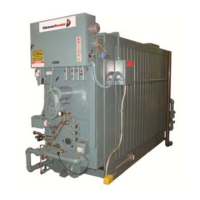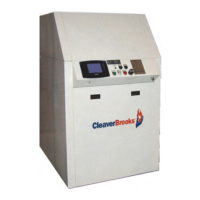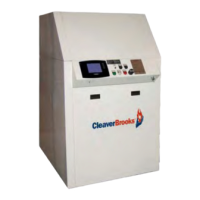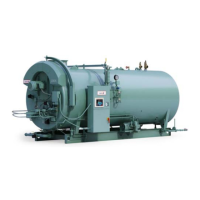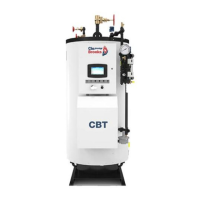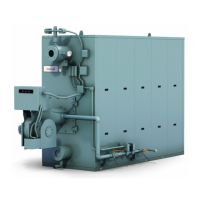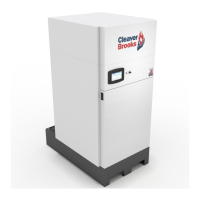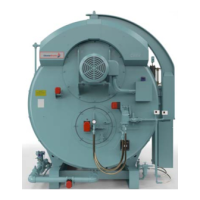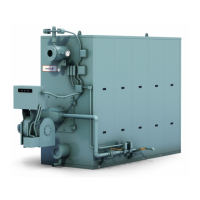Burner Operation and Control
2-14
750-211 (revised 2009)
Promethean Boilers, Model 4WI Manual
2.9 — Combustion Air
Air for combustion of fuel (referred to as “secondary” air) is furnished by the forced draft fan mounted in the
boiler head. In operation, air pressure is built up in the entire head and is forced through a diffuser plate for a thor-
ough mixture with the fuel for proper combustion. The supply of secondary air to the burner is governed by auto-
matically throttling the output of the fan by regulating the rotary air damper. The damper provides the proper
amount of air for correct ratio of air to fuel for efficient combustion at all firing rates.
The use of a Variable Speed Drive (VSD), optional, works in conjunction with the air damper actuator. When high
fire is not required the VSD reduces amperage to the fan motor, reducing energy consumption and the corre-
sponding air flow simultaneously.
FIGURE 2-14. Secondary Air Flow Diagram
2.10 — Automatic Ignition
Oil or gas burners are ignited by an interrupted type pilot. The pilot flame is ignited automatically by an electric
spark.
The series 100 burner usually is equipped with a pilot fired with light oil fuel. All other burners are equipped with a
gas burning pilot. In the case of a combination burner, the gas pilot is used to ignite either the main gas flame or
the oil flame. Either pilot serves the same function.
At the beginning of the ignition cycle, and governed by the program relay and the Hawk ICS system, the pilot sole-
noid valve and ignition transformer are simultaneously energized.
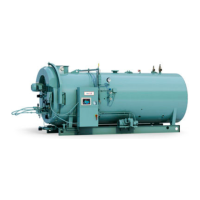
